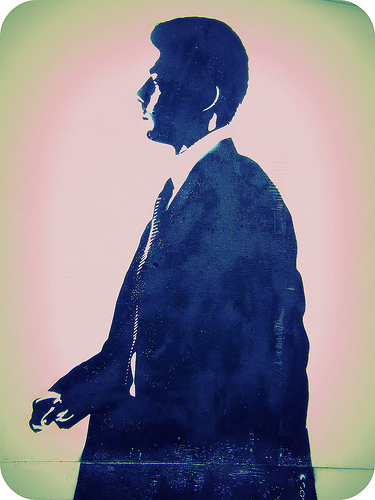How to create a user persona – a case study
Let’s start with a physical product and work backwards on how we would research our user.
Consider that we have an add-on product for people who use leather writing journals like Moleskine. This product slips on the cover and allows a user an easy way to transport everything they need for being productive in a coffee shop. It acts almost like a mini-backpack in that it can carry a smartphone, keys, wallet, post-it notes, etc.
As silly as it can sound, the first step is to come up with a name for our user. This simple fact helps humanize our “subject”.
Let’s say we do some preliminary market research and discover that males ages 26 – 45 are most apt to purchase a high-end branded product like those made by Moleskine. Digging around, we see that Moleskine is experiencing tremendous growth and has sales in excess of hundreds of millions worldwide on an annual basis.
Very good signs that there is a market opportunity here on a macro scale.
A weak persona may look like this initially:
Name: Chris Sankowski
Age: 28
Nothing too fancy right?
But let’s scratch deeper and really get at what Chris’s life is like.
Name: Chris Sankowski
Age: 28
Occupation: Financial advisor
Yearly Income:$110K
Education:Undergraduate degree in Finance from UC Berkeley.
Marital status: Single but dating. Would like to get married possibly and raise a family someday. Would like to teach his kids about outdoor pursuits and find a spouse who enjoys these same activities.
Resides: Studio apartment in San Francisco in the high-end Marina district with rent of $3,500/month but he likes the proximity to great bars and restaurants and other people his age.
Goals: Would like to open his own financial boutique firm by age 35. Currently considering pursuing his MBA to position himself better at work and for running his own business. He knows the clients will evaluate him based on whether he has achieved this education level and his drive to succeed.
Hobbies: Plays in an ultimate Frisbee league on the weekends. Mountain bikes and spends weekends skiing in Tahoe.
Work/Life Balance: Spends many weekends working and reading in a local coffee shop. Reads voraciously and is very driven to move up at work. 60+ hour weeks are common and he often spends part of Saturday at the office. His office can be anywhere via the web though.
Brand Affinity: While reading ebooks on his Kindle app and financial blogs via his iPad, he tends to make notes in his leather journal, which is always a Moleskine. Chris is highly brand conscious and insists on brand-name products. These notes are usually in relation to current projects he’s working on for specific clients or for content creation on blogs. This helps him demonstrate his knowledge of current financial trends and informs much of his investment strategy.
Tastes: Chris tends to shop at high-end boutique clothing stores. Part of it is for his work attire, as the firm requires suit and tie every day. Weekends he can be found sporting jeans and a t-shirt from either J.Crew or Banana Republic.
He enjoys eating great food and wine and is not afraid to drop $200 on a great meal with good friends. He has a humidor at home and is a cigar aficionado.
Online Outlets: Chris checks Facebook multiple times a day on his phone and his laptop at night. He’s active on Twitter and follows various career management and financial thought leaders. Maintains a profile on LinkedIn and uses it to maintain his professional contacts. Also, writes guest posts for various financial blogs. Checks RSS feeds on his phone from websites like Gizmodo, TechCrunch, MotleyFool, Wall Street Journal, and Lifehacker. Prior to purchasing any product he thoroughly researches its story and reads reviews on sites like Amazon.
We now know Chris a bit better.

